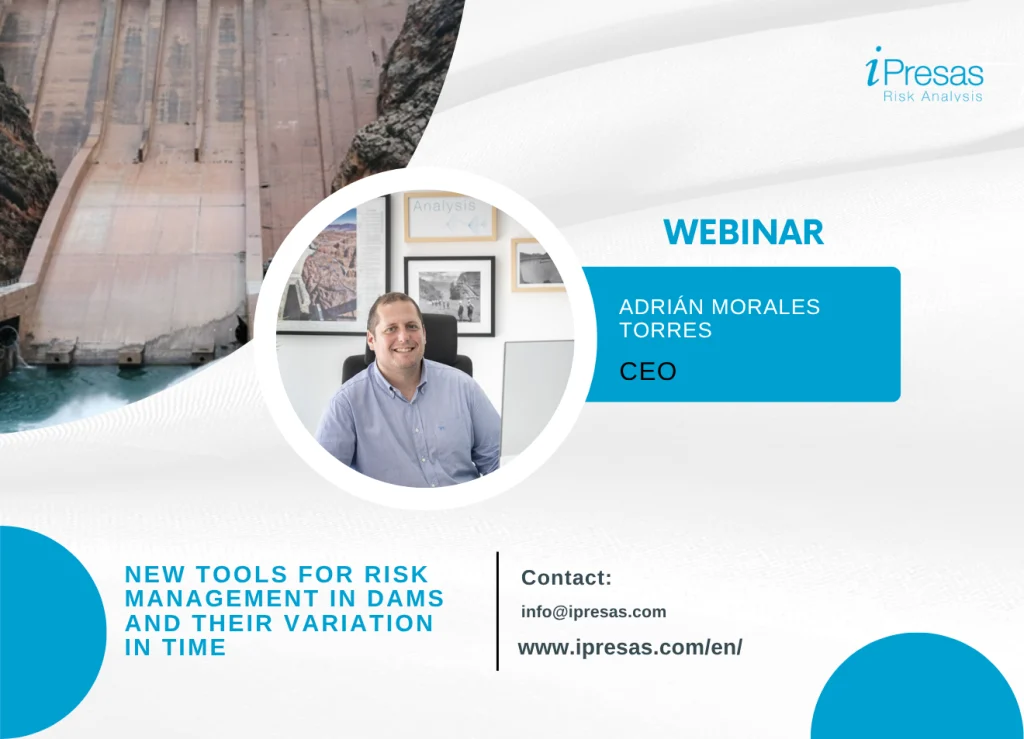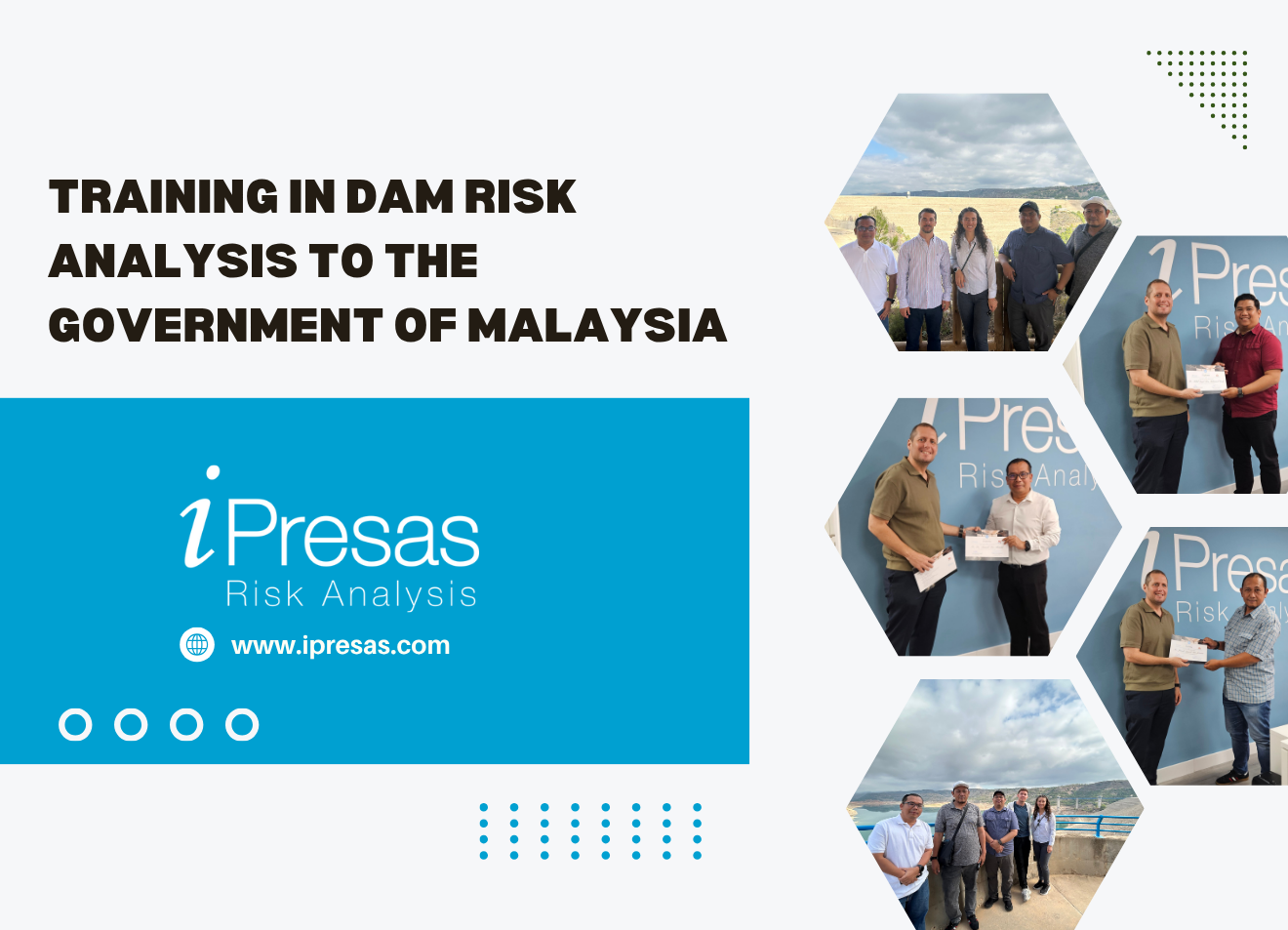When working with large-scale infrastructures like dams, bridges, or levees, we know we are dealing with systems whose failure could have serious social or economic consequences. In that context, there’s one question we always ask ourselves with honesty: What could go wrong… and what would we do then? That simple yet powerful question is the starting point of our risk analysis approach—a discipline that helps us translate uncertainty into concrete decisions, and which is increasingly central to the management of critical infrastructure.
During our first webinar held on June 24 and presented by Adrián Morales Torres, we shared our experience applying our methodology across different dams and countries. It was a technical yet enriching session, where we discussed not only how we assess risk, but also how we reduce it in a cost-efficient way.
Our methodology for Risk Management in Dams
Our methodology has its roots in academic research, but it has grown and evolved with each project. Today, we work in dozens of countries with both public and private entities, always with a clear goal: to help make better-informed decisions about infrastructure safety.
When we talk about risk, we understand it as the combination of three factors: what could happen, the likelihood of it happening, and the consequences it would have. From there, we build a comprehensive view that allows us to identify critical points, prioritize actions, and justify investments.
The first phase of this work usually takes the form of Failure Mode Identification Workshops. We meet with expert staff from different areas related to the infrastructure. This collaborative work not only provides key information but also creates a space for professional development and team building. This is where we apply the qualitative phase of our methodology.
With that foundation, we move to the quantitative phase. This is where mathematical models come into play: we use various tools to estimate the probability of loads (such as floods, earthquakes, or seepage), system responses, and consequences. This generates a risk map that clearly shows where the most urgent problems are and what impact they may have.
One of the major added values of this approach is that it allows us to evaluate risk-reduction measures, both structural and operational. We can estimate the effect of each action on the overall risk and compare it with its cost. That helps us invest smarter—not necessarily more.
All this information is integrated into our platform, which guides daily decision-making, allows for adaptive prioritization, and generates automatic reports. This tool is already being used in more than 300 infrastructures and supports decision-making based on identified risks and the effects of climate change.
Our conclusion
Our conclusion is clear: having information is essential, but turning those documents into coherent decisions is what really makes a difference. Risk analysis, when done rigorously and inclusively, is not just a technical tool—it’s a way to govern our infrastructure better and protect a vital part of our society.
To conclude, we’d like to thank each of the attendees who joined the webinar. We were truly delighted to host it and very pleased with the great reception it received.
We look forward to seeing you at the next one!



